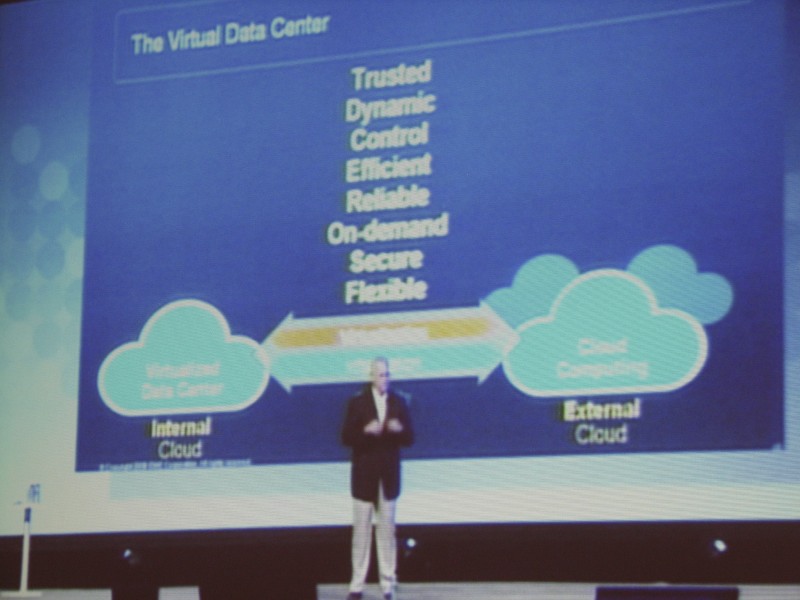EMC World: A view of the enterprise from above the cloud

In his keynote speech at EMC World, CEO Joe Tucci talked about what's hot - not just for EMC, but for the business of technology as a whole - and looked closely at the things that will have the biggest impact on enterprise technology as the economy continues to have its own impact.
Today, as IT departments struggle with fewer resources, scaled-down budgets and increased demand, they turn to companies like EMC for solutions, Tucci said. What do they want? Well, they want to implement strategic initiatives that will have a fast return on investment and reduce their risks while also preparing them for the next generation of technology and the evolution of the data center. And they want it faster, cheaper and, of course, greener.
Also see: Gallery: EMC World 2009
On the information infrastructure side, the offering consists of the storage and data management layers such as EMC Atmos OnLine, which was announced this morning. Through these cloud-based offerings, customers have the power to manage the exponential growth in storage demands. Tucci noted that, in 2000, EMC had two customers storing more than a petabyte of storage. Today, that number is more than 2,000 customers.
But the problem with storage is that customers have always had to buy more than they need so they would have it available to meet their future needs. Through EMC's model, there's an ability to pay for what you use, as you go, and scale up or down as the demands change.
The other side of that problem, however, is the type of information that can be stored on the cloud. On the consumer side of the world, the cloud consists of new applications (at least for the user.) Customers who use consumer cloud apps like Flickr or Gmail usually start fresh, though they may migrate data (photos, contact lists, etc) into the cloud.
On the enterprise level, shifting to a new app isn't as easy. And putting existing apps into the cloud - and giving the same types of access - into the cloud is far more complicated. That's where the virtual infrastructure comes into play.
Tucci handed the keynote baton to VMWare CEO Paul Maritz about halfway through his presentation for an explanation of a new software layer called vSphere, the next-gen upgrade from VMWare Infrastructure. Think of vSphere as an operating system in the cloud - a layer of software and tools in the data center that unleashes the infrastructure into the cloud. The idea is that the software does, in the cloud, what is already being done behind the walls: managing and controlling user access on various platforms and devices while protecting the data.
And by bringing that technology into a protected cloud - along with EMC's offerings of data backup and archiving, as well as smart software that takes issues such as compliance matters into consideration - users can access data anywhere, anytime and from pretty much any device.
Also see: Amazon beefs up cloud visibility and monitoring tools
EMC rolls out new high-end storage lineup; Aims to push data center flash adoption
Data center survey: Cisco's server push sparks interest; VMware, EMC, NetApp shine